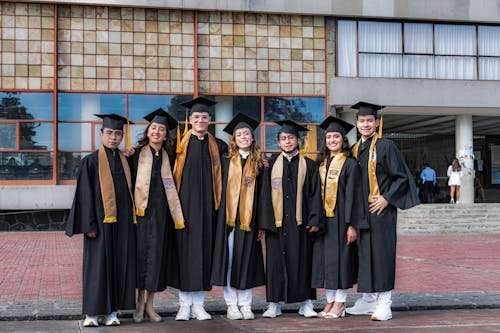Student loan debt stands as one of the biggest money troubles in the United States. Over 45 million people owe more than $1.7 trillion in federal student loans. As we head into 2025, the U.S. government and private groups offer various student loan forgiveness plans to help borrowers cut down or wipe out their debt. These plans aim to support people who work in certain fields or meet specific requirements. This complete guide will walk you through the best student loan forgiveness options available in 2025 and show you how to make the most of them.
- Public Service Loan Forgiveness (PSLF)
Public Service Loan Forgiveness (PSLF) stands out as a well-known program to forgive student loans. It aims to help people who work in public service jobs that qualify. These jobs include positions in government agencies non-profit groups public health, education, and other areas. PSLF gives borrowers a chance to have their federal student loans wiped out. This happens after they make 120 monthly payments that qualify under a repayment plan that also qualifies.

To be eligible for PSLF, you need to:
Have a job with an employer that qualifies (government non-profit, or certain other public service roles).
Complete 120 monthly payments on time while you’re signed up for an income-driven repayment (IDR) plan.
Own Direct Loans
Essential Advice:
Look up your job status and loan category often with the PSLF Help Tool on the Federal Student Aid site.
Sign up for an income-based payment plan to boost your chances of getting your loans forgiven.
Big News for 2025: Come 2025, we’ll see a bigger PSLF program with easier rules for those who’ve already paid some of their loans. Keep an eye on policy shifts to get the most out of this program.
- Income-Driven Repayment (IDR) Forgiveness
Income-Driven Repayment (IDR) forgiveness lets borrowers in income-driven repayment plans have their remaining loan balance wiped out. These plans include PAYE (Pay As You Earn), REPAYE (Revised Pay As You Earn), IBR (Income-Based Repayment), and ICR (Income-Contingent Repayment). They limit monthly payments based on what you earn and how big your family is. After you make payments for 20 or 25 years, you might get the rest of your loan forgiven.

To qualify:
- Sign up for an income-driven repayment plan.
- Make payments for 20 or 25 years (this depends on your plan).
- Keep in mind, the government sees the forgiven amount as income you can pay taxes on. This means you’ll need to pay taxes on whatever gets forgiven.
Heads Up for 2025: Changes in 2025 have made the IDR forgiveness process simpler. Now, some people with undergraduate loans might need 20 years, while those with graduate loans could see forgiveness in 25 years.
- Teacher Loan Forgiveness
Teachers in low-income schools can get up to $17,500 of their federal student loans forgiven through Teacher Loan Forgiveness. This program helps qualified teachers who work in low-income schools for five years in a row.
To be eligible, you must:
- Work full-time in a Title I-eligible school (a school with many low-income students).
- Be a top-notch teacher in a subject where teachers are scarce (like math, science, or special education).
- Finish five straight years of teaching.
Key Tips:
Save proof of your job and teaching qualifications to make sure you can get loan forgiveness.
Send in your application after you’ve taught for five years in a school that qualifies.
Important Update for 2025:
People have suggested giving more loan forgiveness to teachers in areas without enough resources. This could make the program even better in 2025, as part of ongoing changes in education.
- Military Service Loan Forgiveness
People who serve in the U.S. military might qualify to have their loans forgiven through different programs the Department of Defense (DoD) and other military branches offer. These include Student Loan Repayment Programs (SLRP) and options to forgive loans for service members who work in specific jobs or serve for long periods.
Take the Army as an example. It has a loan repayment program that can wipe out up to $65,000 in student loans for those who join certain military specialties. The Navy and Air Force run similar programs offering different amounts of loan forgiveness.
Key Tips:
Keep in mind that each branch of the military has its own rules about who can get these benefits.
Look at the terms to make sure your commitment to serve matches the loan forgiveness benefits you’ll get.
- State-Specific Loan Forgiveness Programs
Many U.S. states give their own student loan forgiveness programs to residents who work in specific fields or in underserved areas. Here are some examples:
California offers the California State Loan Repayment Program (SLRP) to healthcare professionals working in underserved areas.
New York provides the New York State Teacher Loan Forgiveness Program to teachers who work in high-needs schools.
Texas has loan forgiveness programs for medical professionals and public defenders.
These state-specific programs might have different eligibility criteria, loan forgiveness amounts, and terms. You should look into the state-specific options available to you.
Key Tips:
Look up the specific forgiveness programs available in your state and industry.
Keep an eye on deadlines, as many state-based programs are competitive and might need early application.
- Veterans Affairs (VA) Loan Forgiveness
The U.S. Department of Veterans Affairs (VA) helps veterans who work in healthcare and other key fields to pay back their loans. Through the VA Education Debt Reduction Program (EDRP) eligible veterans in qualifying jobs can get up to $200,000 to repay their student loans.
Key Tips:
Visit the VA website or talk to your VA counselor to see if you qualify.
Veterans should apply for this benefit before looking into other ways to get their student loans forgiven.
- Income-Driven Repayment (IDR) Forgiveness for Federal Loans
People who have paid back their loans under IDR plans for more than 20-25 years might get their loans forgiven. This includes those who have been in long-term repayment situations. The IDR forgiveness program has grown in 2025. It now has simpler rules and lets more borrowers qualify.
Key Tips:
Keep up with monthly payments, and check your eligibility with your loan servicer.
Like PSLF, remember the tax consequences of any loan forgiveness you get.
Conclusion:
Student loan forgiveness programs offer a crucial lifeline to people struggling with student debt. If you teach, work in public service, serve in the military, or just follow an income-driven repayment plan, 2025 gives you more chances than ever to cut down or wipe out your loan balance. Make sure you keep up with changes in the law and programs, and talk to your loan servicer or a money expert to figure out which forgiveness option suits your situation best.













1 thought on “💸 The Ultimate Guide to Student Loan Forgiveness Programs in 2025 🎓”